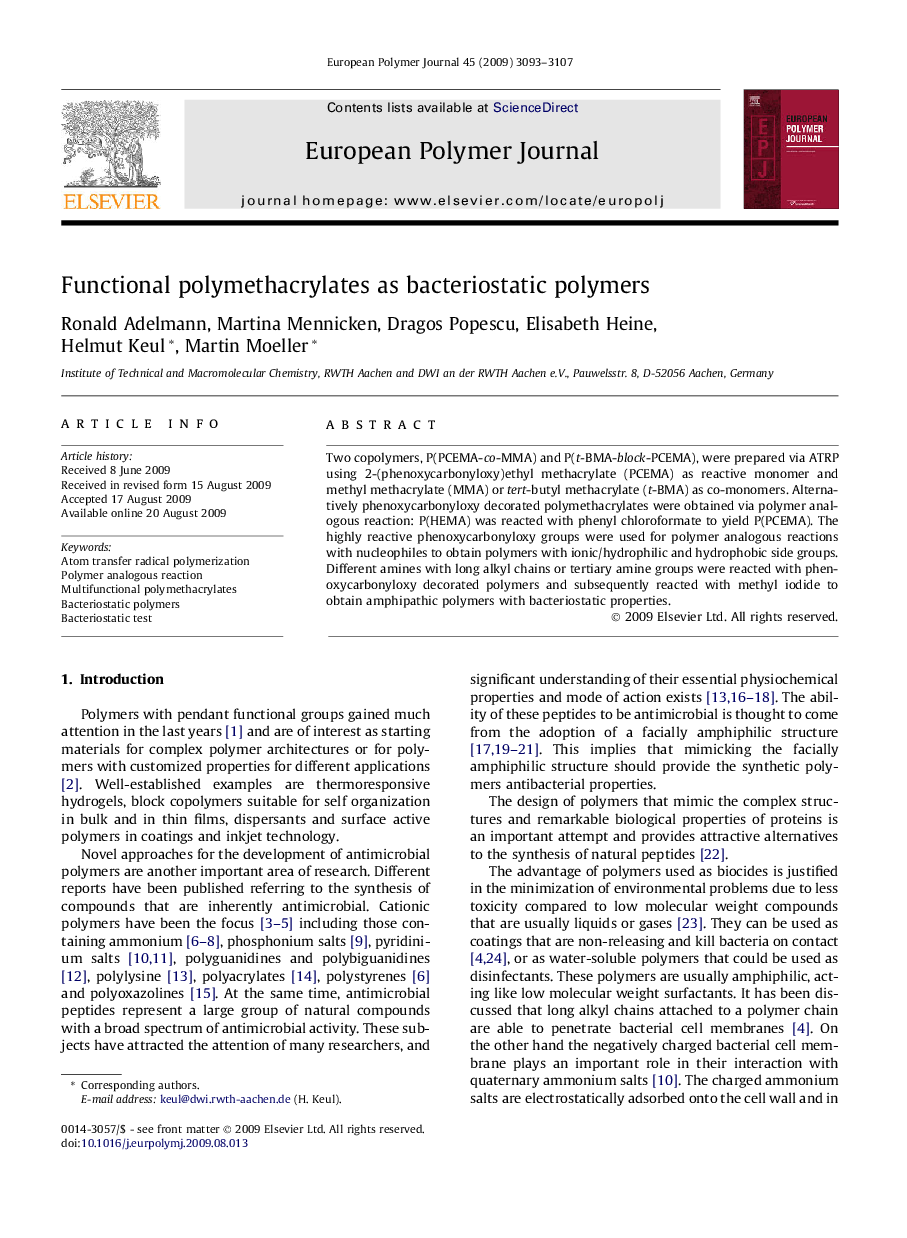| Article ID | Journal | Published Year | Pages | File Type |
|---|---|---|---|---|
| 1402677 | European Polymer Journal | 2009 | 15 Pages |
Two copolymers, P(PCEMA-co-MMA) and P(t-BMA-block-PCEMA), were prepared via ATRP using 2-(phenoxycarbonyloxy)ethyl methacrylate (PCEMA) as reactive monomer and methyl methacrylate (MMA) or tert-butyl methacrylate (t-BMA) as co-monomers. Alternatively phenoxycarbonyloxy decorated polymethacrylates were obtained via polymer analogous reaction: P(HEMA) was reacted with phenyl chloroformate to yield P(PCEMA). The highly reactive phenoxycarbonyloxy groups were used for polymer analogous reactions with nucleophiles to obtain polymers with ionic/hydrophilic and hydrophobic side groups. Different amines with long alkyl chains or tertiary amine groups were reacted with phenoxycarbonyloxy decorated polymers and subsequently reacted with methyl iodide to obtain amphipathic polymers with bacteriostatic properties.
Graphical abstractThe functional poly(methacrylate)s under investigation show values for the minimal inhibitory concentration which were higher by a factor of 10 against Gram-negative Escherichia coli than against Gram-positive Bacillus subtilis.The normal growth curve of bacteria in nutrient solution is shown in line 1. Bacteriostatic effect is shown by line 2, in which after a certain period of time (lag-phase) bacteria start to grow again. If the growth of bacteria is completely inhibited polymers are bactericidic (line 3).Figure optionsDownload full-size imageDownload as PowerPoint slide
